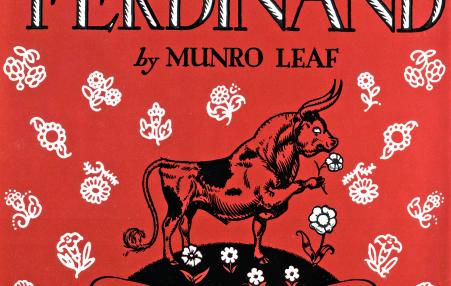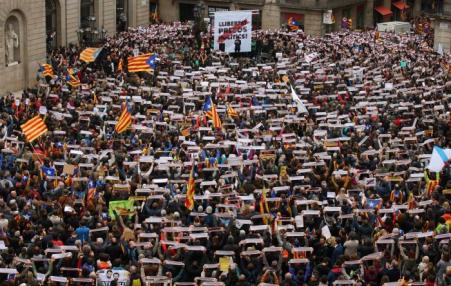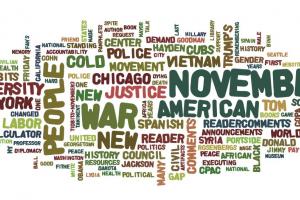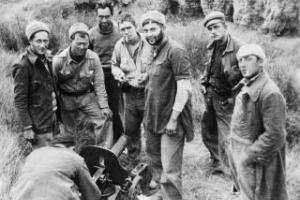African American Anti-Fascists in the Spanish Civil War
Black Past
 Published by Viking Press in 1936, the release of Ferdinand came during the era of the Great Depression. That year also saw the outbreak of the Spanish Civil War. In light of these events, Ferdinand started to take on a much greater significance. Ferdinand, the bull presented a Spanish character who stood out from society and refused to fight. Those who supported the violent uprising that was led by Francisco Franco viewed it as pacifist propaganda and they banned its publication.
Published by Viking Press in 1936, the release of Ferdinand came during the era of the Great Depression. That year also saw the outbreak of the Spanish Civil War. In light of these events, Ferdinand started to take on a much greater significance. Ferdinand, the bull presented a Spanish character who stood out from society and refused to fight. Those who supported the violent uprising that was led by Francisco Franco viewed it as pacifist propaganda and they banned its publication.
 Two visions of Spain have always existed. One sees Spain as a uni-national state, centered in the capital of the Spanish Kingdom, Madrid. This vision denies the existence of other nations in Spain. It is the vision of the Bourbon Monarchic State, including the armed forces and the Catholic Church; it is the conservative version of Spain. Another vision of Spain, however, is plurinational, recognizing other nations in Spain, including Catalonia, the Basque Country, and Galicia.
Two visions of Spain have always existed. One sees Spain as a uni-national state, centered in the capital of the Spanish Kingdom, Madrid. This vision denies the existence of other nations in Spain. It is the vision of the Bourbon Monarchic State, including the armed forces and the Catholic Church; it is the conservative version of Spain. Another vision of Spain, however, is plurinational, recognizing other nations in Spain, including Catalonia, the Basque Country, and Galicia.
 Reader Comments: How American Politics Has Changed - Rigging the Election and Defeating Trumpism; Labor and Standing Rock - #NoDAPL; Vietnam Remembers Tom Hayden; Cubs Tribute; Push Obama to Pardon Oscar L¢pez Rivera;
Resources: Gender pay gap calculator; How do we move people?;
Children's books with social justice themes; African American Pamphlets and Magazines archive;
Announcements: New York, Seattle, Washington, DC, Chicago; and more....
Reader Comments: How American Politics Has Changed - Rigging the Election and Defeating Trumpism; Labor and Standing Rock - #NoDAPL; Vietnam Remembers Tom Hayden; Cubs Tribute; Push Obama to Pardon Oscar L¢pez Rivera;
Resources: Gender pay gap calculator; How do we move people?;
Children's books with social justice themes; African American Pamphlets and Magazines archive;
Announcements: New York, Seattle, Washington, DC, Chicago; and more....
 Based on personal stories of Abraham Lincoln Battalion survivors, Hochschild writes of their courage in an unequal contest where the Fascists had the unstinting support of German and Italian governments while the Democracies embargoed all arms to the Spanish government, an alliance of centrist and leftist parties-this while the Soviets worked to tamp down popular land and factory seizures for fear of inciting those capitalist Democracies to outrightly side with the Right
Based on personal stories of Abraham Lincoln Battalion survivors, Hochschild writes of their courage in an unequal contest where the Fascists had the unstinting support of German and Italian governments while the Democracies embargoed all arms to the Spanish government, an alliance of centrist and leftist parties-this while the Soviets worked to tamp down popular land and factory seizures for fear of inciting those capitalist Democracies to outrightly side with the Right
Spread the word